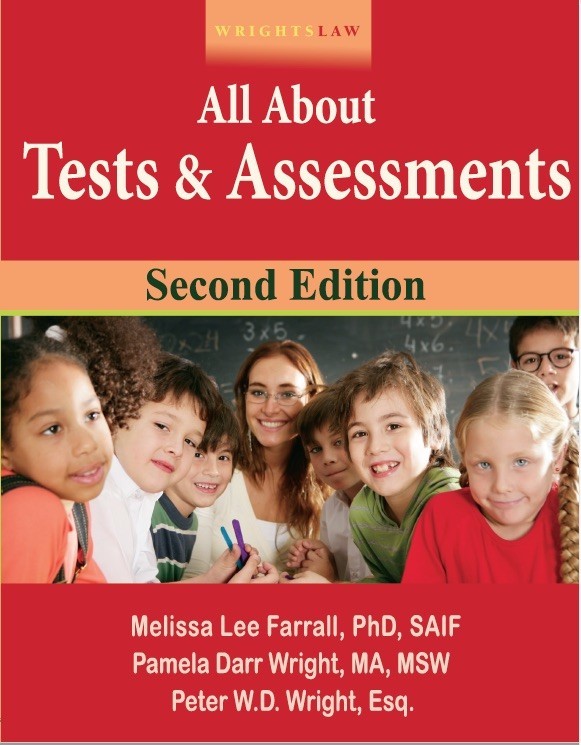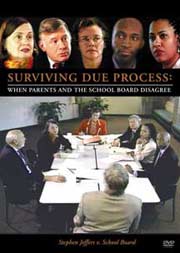|
Home
|
Special IEP Issue
1. IEP Articles & Resources
2. IEPs: Advocacy Tips From Experts
Tip #1: How to Use a Parent IEP Attachment
Tip #3: IEP Meetings, FAPE & Measuring Progress
Pat asks: "Have you heard of a child's IQ dropping? Iím alarmed.
Kate asks, "My son is falling further behind. How can I get the school to offer an appropriate program that meets his needs?"
Jan warns parents about "blind faith" in the system. What makes Jan's letter unusual? Jan is a school psychologist who knows "the system."
1. IEP Articles & Resources
Dozens of people write every week with questions about IEPs. Why are IEPs so difficult? What makes the IEP process so confusing?
If you are looking for guidance about writing IEP goals and objectives, here are links to articles that will help you prepare for the next IEP meeting:
* UNDERSTANDING TESTS & MEASUREMENTS *
Let's assume that your child has deficits in reading and language. To remedy these problems, your child has been receiving special education services. You want to prepare for the IEP meeting that will soon be held to develop next year's IEP.
First, you need answers to some important questions. On objective testing, where were your child's skills at the beginning of the year? On objective testing, where are your child's skills now? Is your child catching up with the peer group? Is your child falling further behind?
Where do you get answers to these questions? Youíll find answers to these questions in standard scores, percentile ranks, subtest scores, and age and grade equivalents.
To successfully negotiate for services that provide REAL educational benefit, you must learn how to interpret educational and psychological test scores.
Download your copy of "Understanding Tests and Measurements"
NOTE FROM WRIGHTSLAW: When you download this article, make sure you get the graphics. It may be better to print article from the screen (rather than download it) to ensure that you have the graphics.
* * * * * * * *
* YOUR CHILD'S IEP: PRACTICAL AND LEGAL GUIDANCE FOR PARENTS AD ADVOCATES *
(The companion article to "Understanding Tests and Measurements")
"Your Child's IEP" is the #1 article on the Wrightslaw site. This comprehensive article describes the IEP process from several angles. The article has been revised to make it consistent with IDEA-97 and federal special education regulations.
This article and the Tests and Measurements article will teach you how to write clear, measurable IEP goals and objectives, and how to avoid the trap of vague, meaningless goals and objectives found in many IEPs (i.e., "80% success on teacher made tests")
* * * * * * *
IEP GOALS & OBJECTIVES: A TACTICS AND STRATEGY SESSION WITH PETE WRIGHT
What strategies can parents use to get good goals and objectives in their child's IEP? What can parents do when the school wants to use subjective "teacher observations," not objective testing, to measure the child's progress? How and when should parents use a consultant to help with IEP goals and objectives? How can parents avoid "methodology disputes?" Pete answers questions from the president of a state LDA chapter.
* * * * * * *
APPENDIX A
Appendix A to the federal regulations includes 40 Questions and Answers about IEPs. Appendix A will answer many of your questions many about IEP goals, objectives, and benchmarks, IEP meetings and IEP team members, the parental role, transition, and other important issues.
You can download a FREE copy of Appendix A from Wrightslaw
Appendix A is also in our book, Wrightslaw: Special Education Law.
* * * * * * *
EMERGENCY! CRISIS! HELP!
If you've been tempted to send an email to Wrightslaw that begins "HELP," you aren't alone. We get dozens of emails a day from parents who are in crisis, or who have very specific questions about their child's case. We simply don't have the time or resources to answer your individual requests for information or help.
But we did write an article for parents who are in crisis and parents who want to avoid crisis situations. It 's important for parents to understand that they often damage their child's case by acting impulsively, reacting emotionally, or believing they must DO SOMETHING RIGHT NOW!
Download a copy of "Crisis! Emergency! Help!"
Over the past few months, we have shared advocacy tips with our newsletter subscribers. Some tips have been so helpful that we decided to recycle them in this special IEP issue.
Tip #1: "How to use a "Parent IEP Attachment " by Judy Bonnell
A few months ago, New Mexico advocate Judy Bonnell sent us a great advocacy tip. Judy wrote:
As a volunteer advocate, your site is the first one I refer parents to. I was delighted to see permission granted to reprint your articles so I may pass them on to parents who do not have access to the Internet.
I have had great difficulty getting districts to take parent attachments seriously. Recently, I was told that the district could not attach such a document to the IEP.
I turned to PRIOR NOTICE in the Procedural Safeguards section of the statute.
PRIOR NOTICE specifies that suggestions put on the table must be accepted or rejected, and the IEP team must list the reasons for accepting or rejecting the proposal. I saw this done one time by a district in another community and it was very successful.
I devised a simple form: a column for Proposal, a column for Accepted/ Rejected, a column for "Reason Accepted or Rejected."
If the request is "Accepted," a notation may be added about "Start Date" and "Who is Responsible" for initiating the proposal.
The parent sees to it that the IEP team formulates the reason for accepting or rejecting each proposal. After doing this in a couple of meetings, the district actually suggested using my form to keep track of proposals and their disposition. I was so proud of them! They are in compliance.
And parents have definitive yes or no answers, and reasons are given for these decisions.
Using this form (even an unofficial form designed by a parent) has eliminated worries that someone will drop the ball, sidestep a request, or just forget. The IEP team members know what issues have been resolved and what issues have not been decided. Issues that must be tabled for further investigation have a name attached and a date for an answer.
Parents need to realize what a powerful tool this can be for them.
If parents can use this system to make the IEP process work for their child, the IEP process may become a little more "parent friendly." Again, thanks for being such a powerful resource for parents and professionals alike.
For a copy of Judyís Tip and the "IEP Attachment" in html
You can also get the "IEP Attachment" as a pdf file
* * * * *
Tip #2: "How to Manage Emotions at IEP Meetings, Get Answers to Your Questions, and Use Follow-up Letters" by Advocate Pat Howey
"How can I get the IEP team to answer my questions and respond to my comments?"
Indiana advocate Pat Howey gives tips to parents and advocates about:
* When Disagreements Turn Into Power Struggles *
* Parents Have Power -- Use It Wisely! *
* The Dangers of Making Threats *
* Dealing with IEP Meeting Frustrations *
* The Power of the Your Written Follow-up Letter *
* * * * *
Tip #3: "IEP Meetings, FAPE & How to Measure Progress" by Parent Attorney Sonja Kerr
"Parents often say that when they go to IEP meetings, the school staff won't answer their questions or listen to their requests. Here's a good approach for parents to use when caught up in the IEP meeting quagmire."
If youíre preparing for an IEP meeting, you need to read Sonja Kerr's tips about IEP meetings, FAPE, and measuring progress. Learn why Sonja says, "This is like playing 20 questions with the devil!"
"My son's IQ is dropping! Why?"
Pat asks: "Have you heard of a child's IQ dropping? This happened to my son and Iím alarmed."
"When my son entered Kindergarten, his skills were about 6 months behind his peers. By second grade, he was about 1.5 year behind, by 4th grade he was 2.5 years behind. Private tutoring helped him gain skills but he still has language problems."
"On the most recent evaluation, his Full Scale IQ had dropped by 9 points! On his report cards, he gets average grades and we are told that is doing 'just fine'."
Read the answer to this mother's questions
* * * * *
"How Can I Get an Appropriate Program?"
Kate writes, "My son was placed in special education in second grade. He is now in fifth grade. When he entered special education, his reading level was 1.3. After 30 months of special education, his reading level is 2.3. He is falling further behind, not closing the gap."
"I have done a great deal of research about the components an appropriate reading program for learning disabled children. I requested that the school use a program that is structured, systematic, sequential, repetitive and phonologically based."
The school insists that their generic program (where he made 12 months of "progress" in 30 months) is fine. How can I get them to provide an appropriate program?
* * * * *
"Why is it a mistake to trust the school?"
Jan warns parents about "blind faith" in the system. What makes Jan's letter unusual? Jan is a school psychologist who knows "the system."
Interested in caselaw about IEPs? Here are links to two cases that will help you understand IEPs, and what an appropriate IEP should include.
* EVANS V. RHINEBECK *
Evans v. Rhinebeck is a New York tuition reimbursement case that discusses components of an appropriate IEP for a child with dyslexia.
* T. H. V. PALATINE *
T. H. v. Palatine focuses on an appropriate program for a young child with autism, and includes an excellent discussion of vague subjective IEP goals and objectives. (This decision is in pdf so you will need Acrobat Reader to view it.)
| |||||
|
|
|||||
|
Copyright © 1998-2025, Peter W. D. Wright and Pamela Darr Wright. All rights reserved. Contact Us | Press l Mission l Our Awards l Privacy Policy l Disclaimer l Site Map |
|||||




